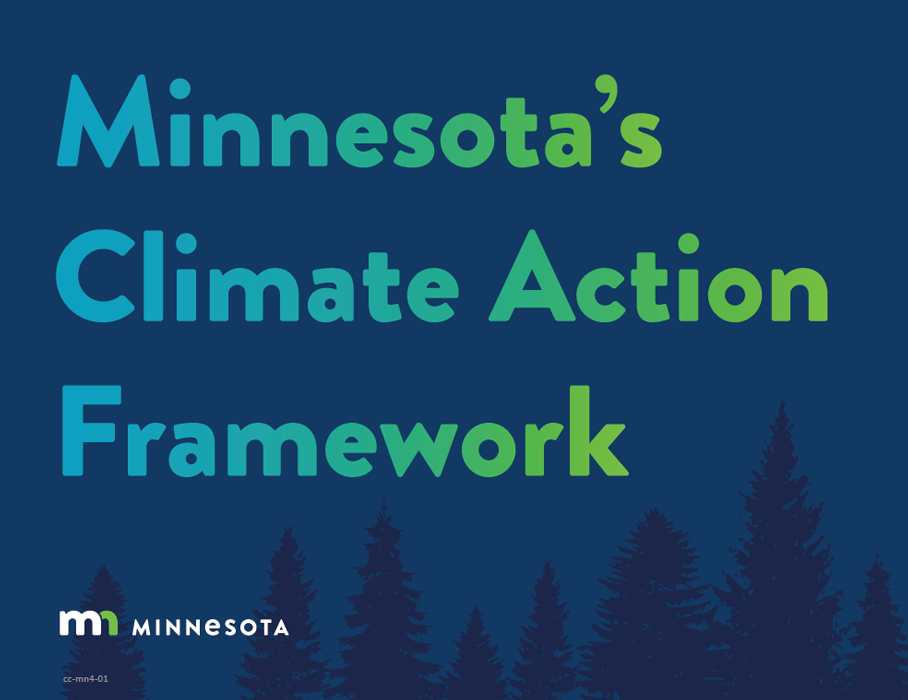Climate change is a major threat to people and the environment in Minnesota, hindering our ability to ensure healthy and sustainable environmental quality for all. Climate change presents risks including extreme weather events and works against our actions to improve environmental conditions in other areas such as water quality.
Minnesota is working hard to mitigate our contribution to climate change by achieving carbon neutrality and to improve the resiliency of our communities, businesses, and the natural environment. We strive to do all this work equitably, so that all communities are meaningfully involved, costs and benefits are distributed fairly, and no one bears a disproportionate share of the adverse impacts of climate change. As a forum for leadership and coordination across Minnesota state agencies on priority environmental issues, the EQB is working to help Minnesota achieve its goals.
Minnesota’s Climate Action Framework outlines priorities and next steps to help Minnesota achieve its climate vision.
Past Reports
Climate Solutions and Economic Opportunities (2016)
This study, led by the EQB, evaluated specific strategies from across Minnesota’s economy for their potential to reduce harmful greenhouse gases that contribute to climate change, and for their potential to grow our economy. The EQB worked with state agencies, industries, and citizens in this collaboration, which built off the prior work of the 2008 Minnesota Climate Change Advisory Group.
Download the report below.
Minnesota and Climate Change: Our Tomorrow Starts Today (2015)
In 2015, the EQB reported on how our climate is changing—and how Minnesota is responding.
Download the report below.
Clean Energy
Clean, carbon-free energy is a key part of meeting Minnesota’s climate goals.
Solar
In 2019, the Minnesota Legislature asked the Environmental Quality Board to study the potential for solar development on Minnesota’s Closed Landfill Program sites. Solar development on these sites would put underutilized, contaminated land to use generating clean energy, reducing greenhouse gas emissions, and creating jobs and revenue. Siting solar development on brownfields like closed landfills can reduce development pressure on other lands, such as farmland and natural areas. The Environmental Quality Board delivered a report to the legislature in December 2020, and data about Closed Landfills Program sites is now available below.
Report
GIS Data Tool
- Solar on Closed Landfills Data Tool (Barr Engineering Co.) – This tool, developed by Barr Engineering, allows you to search for information about specific Closed Landfill Program sites, transmission lines, substation locations, and other public data.
Presentations
- Solar on Minnesota Closed Landfills Feasibility Study: What Did We Learn? (Recording of webinar held December 9, 2020)